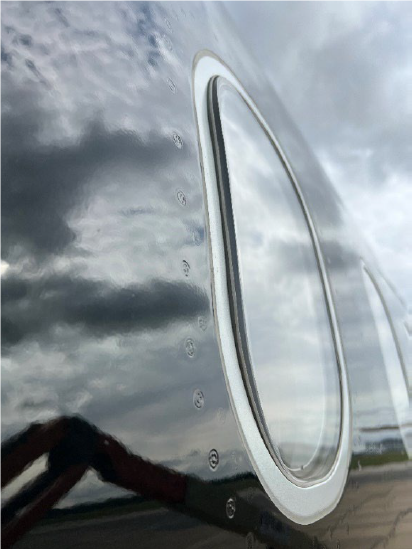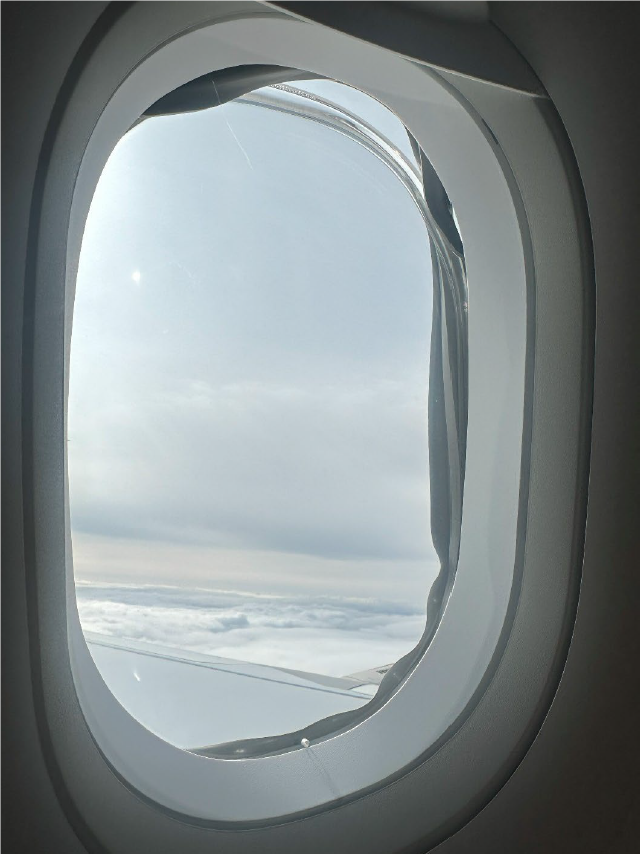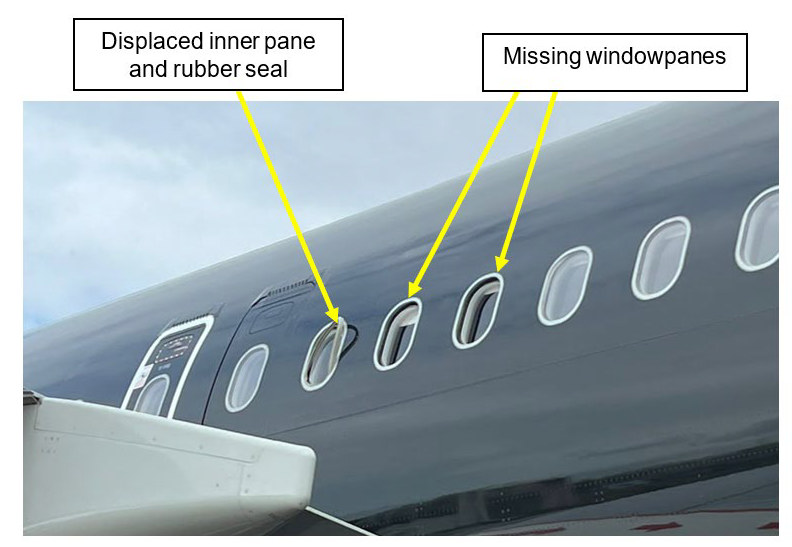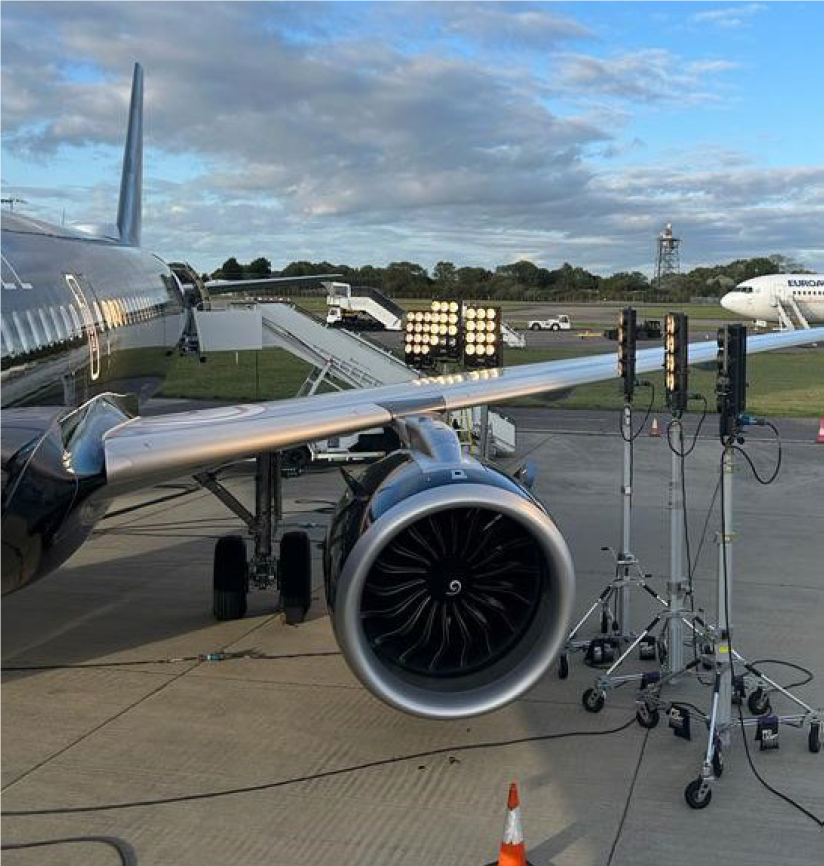


A Titan Airways Airbus A321N aircraft (G-OATW) carrying out a ferry flight to Orlando, FL made a diversion to London-Stansted Airport (EGSS), UK following an in-flight emergency on 04 October. Post-landing inspections showed three cabin windows missing as well as substantial damage to the left horizontal stabiliser of the aircraft.
UK-AAIB carried out an investigation and issued a Special Bulletin to raise awareness of the recent occurrence.
So , what happened that day ? How did the windows go missing ?
The Titan Airways aircraft was scheduled to embark on a multi-day charter away from base with a flight crew consisting of three pilots, an engineer, a load master and six cabin crew. The first sector was a positioning flight from London Stansted Airport to Orlando International Airport, Florida.
In addition to the 11 crew there were nine passengers on board who were all employees of the tour operator or aircraft operating company. The passengers sat together in the middle of the aircraft just ahead of the overwing exits.
The aircraft took off from Runway 22. Several passengers recalled that after takeoff the aircraft cabin seemed noisier and colder than they were used to.
As the aircraft climbed through FL100 and the seatbelt signs were switched off, the loadmaster, who had been seated just in front of the other passengers, walked towards the back of the aircraft. He noticed the increased cabin noise as he approached the overwing exits and his attention was drawn to a cabin window on the left side of the aircraft.
He observed that the window seal was flapping in the airflow and the windowpane appeared to have slipped down. He described the cabin noise as ‘loud enough to damage your hearing’.

After the finding reached the cockpit, the flight crew stopped the climb at FL140 and reduced airspeed whilst the engineer and then the third pilot went to look at the window. Having inspected the window, it was agreed the aircraft should return to Stansted.
Cockpit established the aircraft in a hold whilst they completed the overweight landing checklist, confirmed landing performance and briefed for the return to Stansted. The approach and landing on Runway 22 were uneventful.
The day before the occurrence flight the aircraft had been used for filming on the ground, during which external lights had been shone through the cabin windows to give the illusion of a sunrise. The lights were first shone on the right side of the aircraft for approximately five and a half hours, with the light focused on the cabin windows just aft of the overwing exits.
The lights were then moved to the left side of the aircraft where they illuminated a similar area on the left side for approximately four hours. Photographs taken during filming showed six sets of flood lights on both sides of the aircraft.
Two window assemblies were missing, and the inner pane and seal from a third window were displaced but partially retained in the airframe. A shattered outer pane was recovered from the entrance to a rapid-exit taxiway during a routine runway inspection after the aircraft landed.

A fourth window protruded from the left side of the fuselage. The four affected windows were adjacent to each other, just aft of the left overwing exit.
Removal of the cabin lining inside the passenger cabin revealed that the window retainers were in good condition and correctly installed. The foam ring material on the back of the cabin liners was found to be melted in the areas adjacent to the windows that were damaged or missing.
Visual examination of the damaged windowpanes revealed that they were deformed and shrunk. The deformed panes no longer formed an effective interface with the rubber seals.
In the presence of AAIB, the operator removed several cabin liners from the right side of the passenger cabin. This revealed additional thermal damage and window deformation in the area around the overwing emergency exit, but to a lesser extent than the left side of the aircraft.
The underside of the left horizontal stabiliser leading edge panel was punctured. Small pieces of acrylic were found in the stabiliser when the panel was removed.
Photographs of the filming showed that the Maxibrute 12 flood lights were between approximately 6 and 9 m from the window areas where damage was apparent.

The windows appear to have sustained thermal damage and distortion because of elevated temperatures while illuminated for approximately four to five and a half hours during filming activity the day before the flight. It is likely that the flood lights were positioned closer than 10 m.
Source and Credit : AAIB Bulletin S2/2023 SPECIAL / © Crown copyright 2023
